Bid Confidently, Win Consistently – Zip Code Estimates Made Easy!
- Accurancy
- Efficiency
- Transparency
- Customization
- Time Saving
- Professionalism
- Cost Control
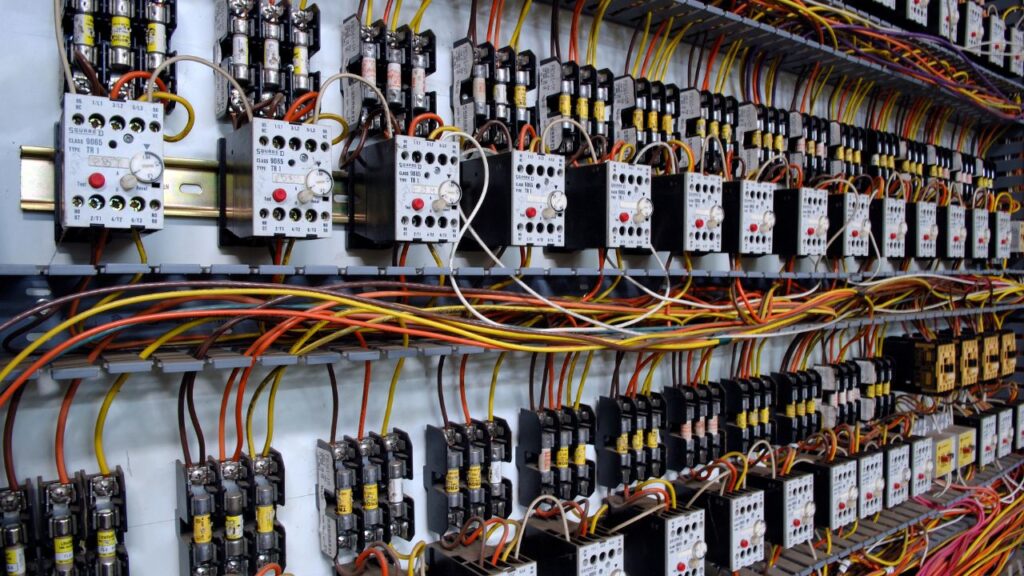
High-rise building construction poses unique challenges, and among them, electrical systems stand out as a critical component. The efficient distribution of power throughout a tall structure requires careful planning, expertise, and accurate cost estimation. In this article, we will delve into the key factors influencing electrical costs in high-rise buildings and provide a step-by-step guide for creating a comprehensive electrical cost estimate.
The intricacies of high-rise building design and layout significantly influence electrical costs, as these structures often boast complex configurations with multiple floors. The intricate electrical network required to power such buildings is influenced by the quantity and types of electrical components. For instance, the routing of wiring and cabling needs to be carefully planned to ensure efficient power distribution. This complexity directly impacts both material and labor costs, as the installation and maintenance of an intricate electrical system in a multi-story building demand a higher level of expertise and resources.
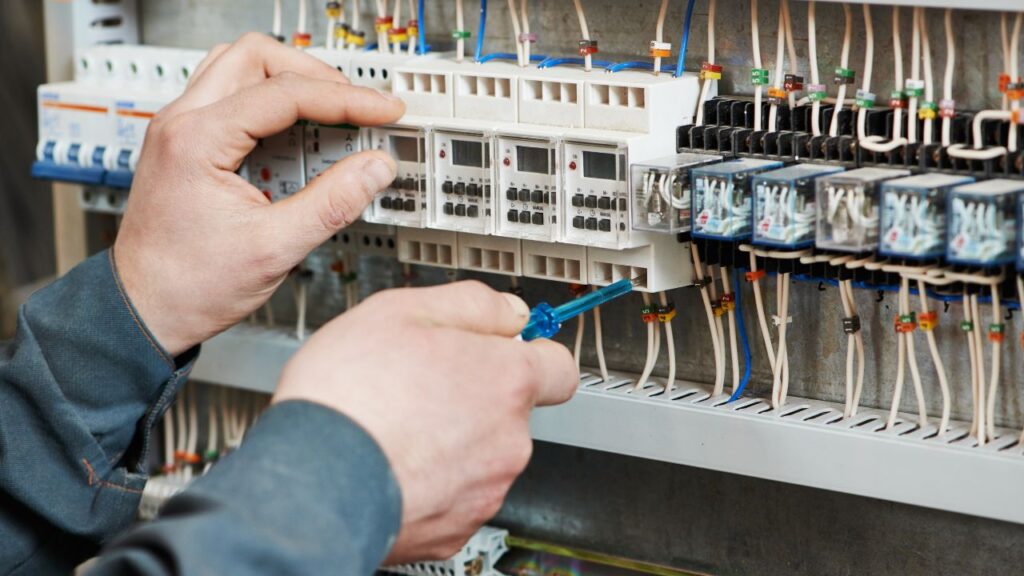
Understanding the anticipated power load and usage patterns is a critical aspect of electrical cost estimation for high-rise buildings. These structures have diverse power requirements, including lighting, HVAC systems, elevators, and various amenities. Analyzing and quantifying these loads is essential to determine the size and capacity of the electrical systems needed. The intricacies of high-rise power demands directly influence the costs associated with transformers, switchgear, and distribution panels, as these components must be tailored to handle the specific and varied electricity needs throughout the building.

Fully Insured Licensed Hire a Contractor For Electrical
Hire Contractor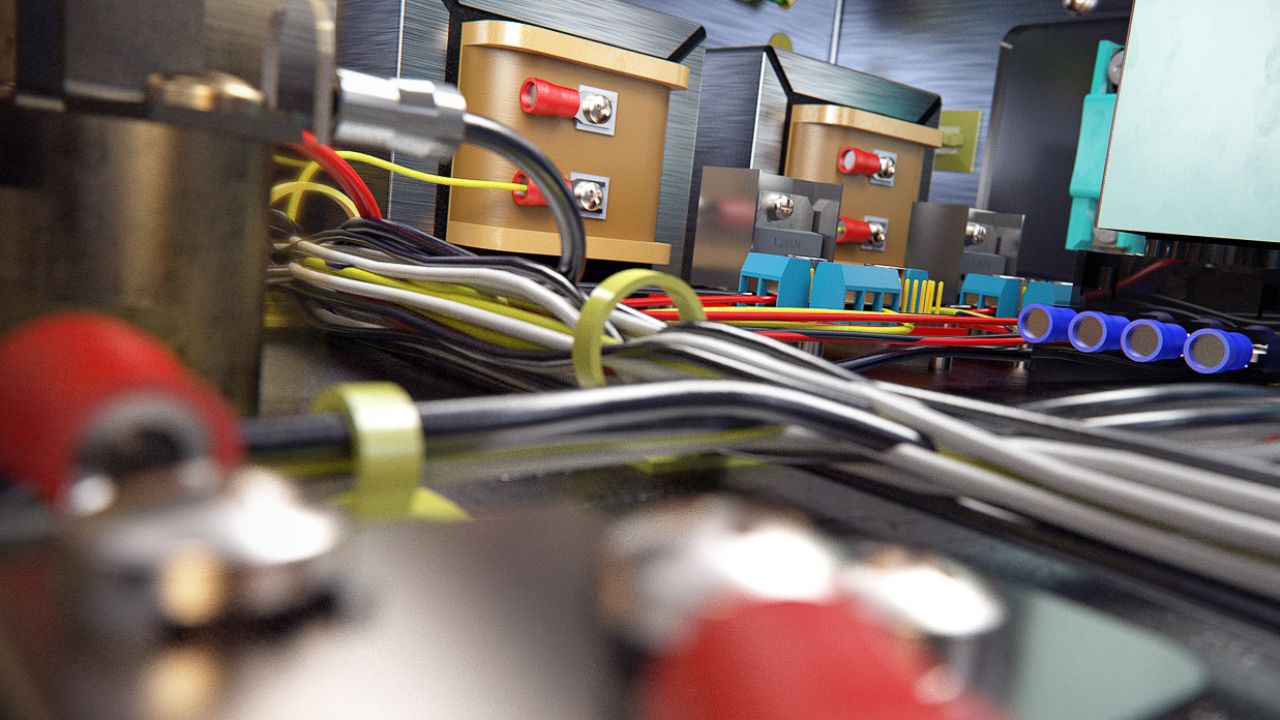
Make Informed Design Decisions Showcase Your Design Ideas
Get RenderingThe design of the electrical system itself plays a pivotal role in determining overall costs. Decisions about the type of wiring, distribution methods, and the integration of renewable energy solutions all contribute to the expense of the electrical system. Opting for energy-efficient technologies, despite potentially higher upfront costs, can lead to substantial long-term savings and environmental benefits. The design considerations extend beyond mere functionality, encompassing factors like sustainability, efficiency, and compatibility with modern technologies.
High-rise buildings are increasingly incorporating advanced technologies, and their integration into the electrical system adds a layer of complexity to cost estimation. Smart building systems, automation, and energy management solutions are becoming integral parts of modern construction projects. While these technologies enhance operational efficiency and reduce long-term costs, their initial integration requires careful planning and investment. The cost estimation process must account for the implementation and integration of these technologies, considering both the immediate expenses and the future benefits they bring.
Skilled labor is a vital component of electrical systems installation and maintenance in high-rise buildings. The expertise required for working on intricate electrical networks in multi-story structures demands a specialized workforce. Factors like location, union agreements, and the complexity of the project can influence labor costs significantly. Efficient project management and collaboration are essential during the installation phase to optimize labor expenses. The skilled workforce must not only install the system effectively but also ensure its ongoing maintenance and reliability throughout the building’s lifespan.
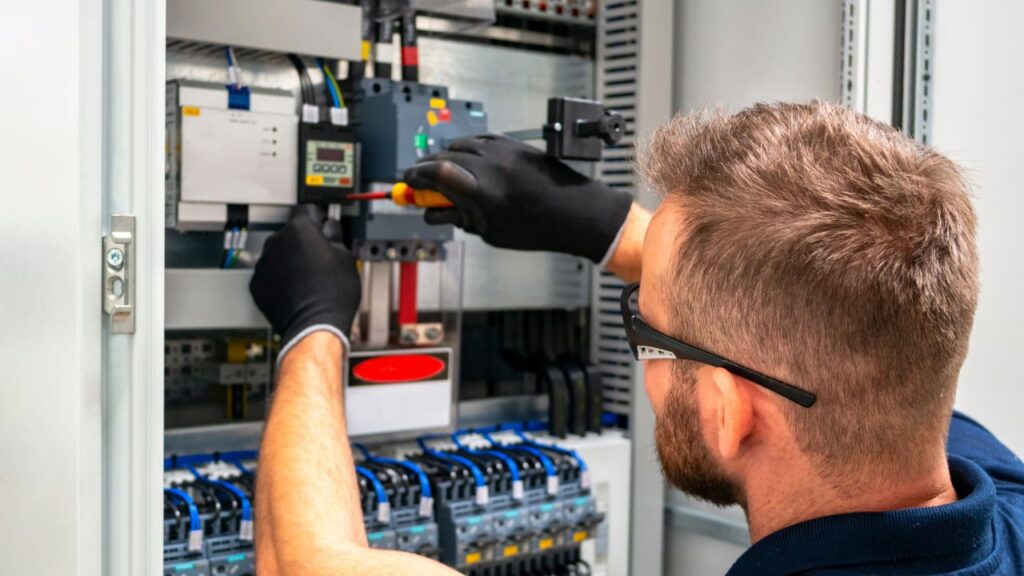
Adhering to electrical codes and regulations is non-negotiable in construction projects, especially in high-rise buildings. Compliance involves costs associated with inspections, permits, and potential modifications necessary to meet specific electrical standards. Neglecting regulatory requirements can lead to costly delays and penalties. A comprehensive understanding of local and national electrical codes is crucial during the planning and cost estimation stages to ensure that the electrical system meets all necessary safety and compliance standards.
The unique challenges posed by the height and location of high-rise buildings have a direct impact on the logistical aspects of electrical installations. Ensuring accessibility for transporting materials, equipment, and personnel to elevated heights is a significant consideration. The need for specialized equipment, such as cranes and lifts, adds to the overall project expenses. Planning for these challenges is vital to avoid disruptions, delays, and potential cost overruns associated with difficult access points in high-rise construction. The logistics of moving and installing electrical components at height require careful coordination and planning, influencing both time and budget considerations.
Accurate electrical cost estimation plays a pivotal role in the budgeting and financial planning of construction projects, especially in high-rise buildings. A precise estimate provides stakeholders with the information needed to create a realistic budget that aligns seamlessly with the overall financial plan. This transparency in budgeting ensures that financial resources are allocated efficiently and strategically, thereby mitigating the risk of overspending. With a well-informed budget, stakeholders can make informed decisions throughout the project, contributing to the overall financial success of the construction endeavor.

Estimating electrical costs is instrumental in optimizing the allocation of resources, encompassing materials, labor, and equipment. High-rise buildings, with their unique electrical demands, require a balanced and cost-effective approach to resource allocation. Accurate estimation prevents shortages or excesses of essential resources during construction, ensuring that the project progresses smoothly. Whether it’s the procurement of specialized electrical equipment or the hiring of skilled labor, precise resource allocation based on cost estimates is crucial for the successful implementation of the electrical system in high-rise construction.
Cost estimation goes beyond predicting straightforward expenses; it includes identifying potential risks and uncertainties inherent in the construction process. A well-prepared electrical cost estimate incorporates a contingency fund, providing a financial buffer for unexpected events or changes in the project scope. This proactive approach to risk management minimizes the impact of unforeseen issues, enhancing the project’s overall resilience. Whether facing design alterations, unexpected challenges during installation, or market fluctuations affecting material costs, a contingency fund based on accurate estimates ensures that the project can adapt and succeed despite potential challenges.
Accurate electrical cost estimates significantly contribute to realistic project scheduling. Understanding the expected costs of electrical components allows for precise planning and coordination. This, in turn, reduces the likelihood of delays attributable to budgetary constraints. A well-organized project schedule ensures that electrical installations align with the overall construction timeline, promoting efficiency and timely project completion.
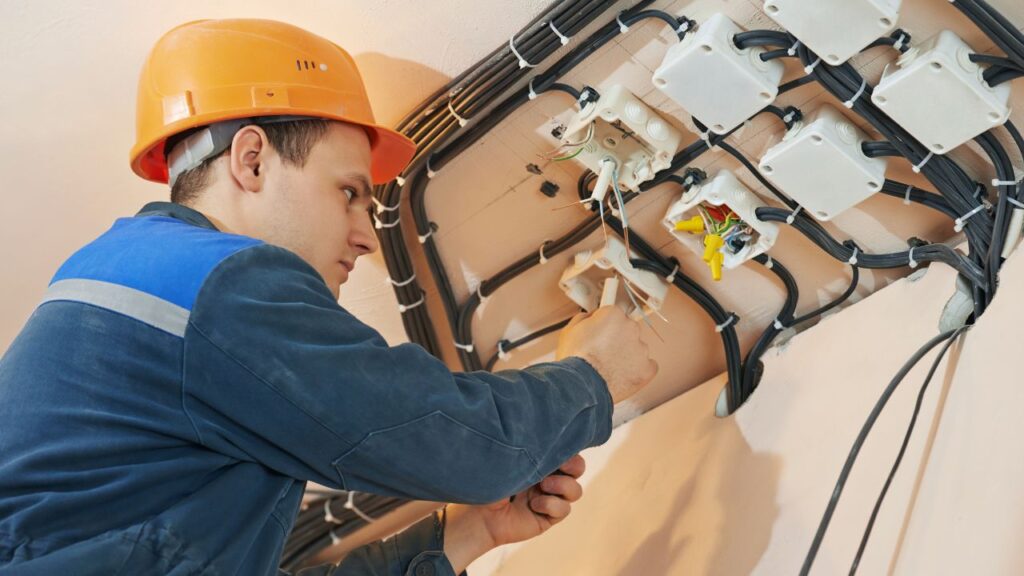
Additionally, accurate cost estimates provide a foundation for project managers to allocate the necessary resources at each stage, ensuring a smooth workflow and adherence to deadlines.
Contractors heavily rely on accurate electrical cost estimates when preparing bids for construction projects. Realistic estimates enable competitive bidding, enhancing the contractor’s chances of securing the project. Moreover, it ensures that contractors can commit to delivering quality work within the proposed budget. Accurate estimates not only benefit contractors by winning bids but also foster trust and positive relationships with clients by demonstrating transparency and reliability in financial matters. The precision in estimating electrical costs plays a crucial role in shaping the terms of contracts, setting the stage for successful collaborations between contractors and clients.
Estimating electrical costs involves a careful consideration of the type and quality of materials and technologies to be used. This commitment to quality assurance ensures that the chosen components meet required standards, contributing to the longevity and efficiency of the electrical system. A well-thought-out cost estimate supports the selection of durable and reliable materials, ultimately enhancing the overall quality of the construction project. Quality assurance in electrical cost estimation also aligns with regulatory compliance, ensuring that the entire system meets industry standards and local building codes. This focus on quality not only enhances the performance of the electrical system but also minimizes the risk of future maintenance issues, contributing to the long-term success of the project.
Effectively defining the electrical scope is a fundamental step in ensuring the success of high-rise building electrical installations. This involves a comprehensive identification and clarification of all aspects related to the electrical project. Collaborating with architects, engineers, and contractors is crucial to gather comprehensive project details. This collaborative approach ensures that all parties involved have a unified understanding of the electrical scope, taking into consideration the intricacies of the building’s design, anticipated power load requirements, and the integration of advanced technologies. A well-defined scope minimizes the likelihood of misunderstandings or misinterpretations throughout the construction process, laying the groundwork for a streamlined and successful electrical installation.
Conducting a thorough analysis of the anticipated power load and usage patterns is a critical aspect of electrical cost estimation. This analysis goes beyond simply calculating the overall power demand; it involves a detailed consideration of specific electrical needs, including lighting, HVAC systems, elevators, and other amenities. Determining the system’s size and capacity based on these requirements is essential for accurate cost estimation. The intricacies of a high-rise building’s power load must be carefully examined to ensure that the electrical system is designed to handle the diverse and dynamic needs of the structure, ultimately influencing the costs associated with transformers, switchgear, and distribution panels.
The design of the electrical system itself is a key factor influencing costs. Developing a detailed design requires careful consideration of various factors, including wiring type, distribution methods, and the integration of smart building technologies. Opting for efficient technologies and sustainable solutions may result in higher upfront costs but can lead to long-term savings and environmental benefits. The electrical system design not only impacts installation costs but also influences the overall efficiency and sustainability of the system throughout its lifecycle.
Collaboration with project managers and contractors is essential when estimating the skilled labor required for electrical installation in high-rise buildings. Factors such as location-specific considerations, union agreements, and the complexity of the project play a significant role in determining labor costs. Accurate labor estimation is crucial for creating a realistic budget and project schedule. It also aids in resource planning, ensuring that the right personnel with the required skill set are available at the right stages of the project for efficient and timely electrical installations.
Researching and identifying all electrical codes and regulations applicable to the project is a critical step in ensuring compliance. Obtaining necessary permits and including associated costs for inspections and compliance checks in the overall estimate is essential. Regulatory compliance is non-negotiable in construction projects, particularly in the electrical domain, and neglecting these requirements can lead to costly delays and penalties. A meticulous approach to regulatory compliance ensures that the electrical installation meets all necessary standards, contributing to the overall success and legality of the construction project.

High-rise buildings often integrate advanced technologies, such as smart building systems, automation, and energy management solutions, into their electrical systems. Factorizing the costs associated with integrating these technologies is crucial for accurate cost estimation. While the upfront costs of technology integration may be higher, the potential long-term savings and efficiency gains make it a strategic investment. This aspect of electrical cost estimation goes beyond traditional components, reflecting the building’s commitment to modern and efficient electrical solutions that enhance overall functionality and sustainability.
The unique challenges posed by the height and location of high-rise buildings directly impact the logistics of electrical installations. Ensuring accessibility for transporting materials, equipment, and personnel to elevated heights is crucial. Specialized equipment, such as cranes and lifts, may be required, adding to the overall project expenses. Planning for these logistical challenges is vital to avoid disruptions, delays, and potential cost overruns associated with difficult access points in high-rise construction. This proactive consideration of accessibility and logistics contributes to the overall efficiency and success of the electrical installation process.
Allocating a contingency budget is a prudent practice to account for unforeseen circumstances or changes in the electrical project. Unanticipated events, design alterations, or unexpected issues during construction can impact costs. A contingency budget, usually set as a percentage of the total estimated cost, provides a financial buffer for such situations. This ensures that the project remains financially resilient and can adapt to challenges without compromising the overall success of the electrical installation. A well-considered contingency budget contributes to financial stability and effective risk management throughout the construction process, fostering confidence in the project’s ability to navigate uncertainties.

Fully Insured Licensed Hire a Contractor For Electrical
Hire Contractor
Make Informed Design Decisions Showcase Your Design Ideas
Get RenderingThe cost of commercial electrical work per square foot exhibits substantial variability, contingent upon factors such as location, project complexity, and specific electrical requirements. On average, it typically falls within the range of $2.40 to $7.20 per square foot. It’s important to note that this is a generalized estimate, and the actual costs may deviate based on the unique details of each project and the prevailing conditions in the local market.
Commercial Space Type | Low Estimate ($/Sq. Ft.) | High Estimate ($/Sq. Ft.) |
Office Buildings | $2.40 – $4.80 | $6.00 – $8.40 |
Retail Spaces | $3.60 – $6.00 | $7.20 – $9.60 |
Warehouses | $1.20 – $3.60 | $4.80 – $7.20 |
Restaurants | $4.80 – $7.20 | $8.40 – $10.80 |
Medical Facilities | $6.00 – $8.40 | $9.60 – $12.00 |
Hotels | $4.80 – $7.20 | $8.40 – $10.80 |
In the pursuit of sustainability and cost-effectiveness, adopting LED lighting systems with smart controls stands out as a pivotal strategy for high-rise buildings. LED technology offers unparalleled energy efficiency and durability, providing long-term benefits that extend beyond cost savings. The integration of smart controls, such as occupancy sensors and automated dimming, further enhances the efficiency of lighting systems by optimizing usage based on occupancy and ambient lighting conditions.
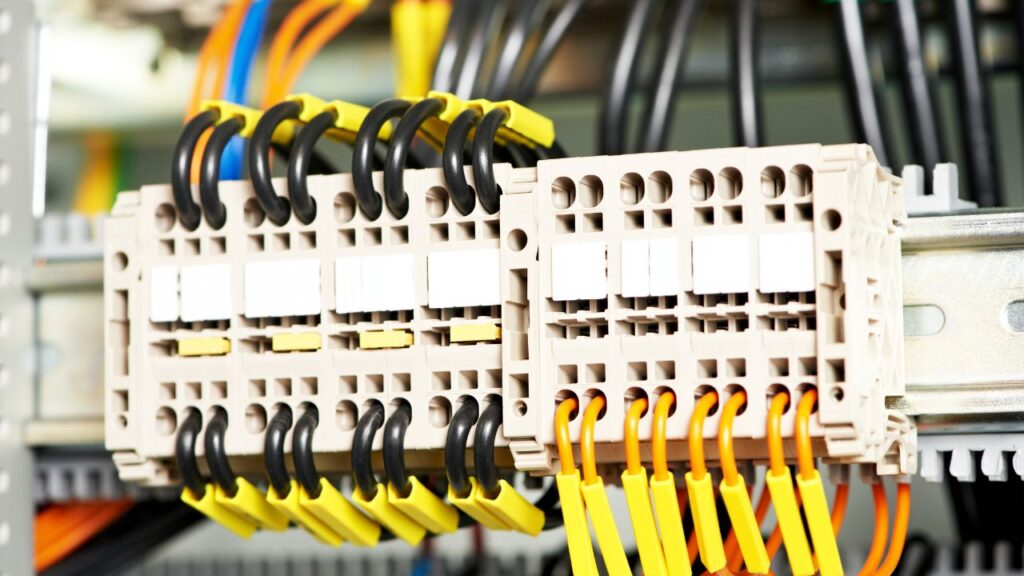
This dual approach not only reduces energy consumption but also extends the lifespan of lighting fixtures, contributing to a more environmentally friendly and economically viable lighting solution for high-rise structures.
Investing in energy-efficient HVAC systems and implementing strategic maintenance practices are fundamental to optimizing a high-rise building’s energy consumption. Energy-efficient HVAC systems not only reduce operational costs but also contribute to a more sustainable and eco-friendly operation. The introduction of temperature zoning adds a layer of sophistication, allowing for targeted heating or cooling in specific areas based on occupancy and usage patterns. This level of optimization ensures that the HVAC systems operate at peak efficiency, minimizing energy waste and creating a comfortable indoor environment for occupants.
The exploration of renewable energy sources, particularly through solar panel installations, is a forward-thinking strategy for high-rise buildings. The integration of solar panels on building facades or rooftops harnesses clean and sustainable energy from the sun. To maximize the benefits, combining solar installations with energy storage solutions enables the storing of excess energy for later use, reducing reliance on conventional power sources during peak demand periods. This integration not only lowers electricity costs but also aligns with the broader commitment to reducing the carbon footprint of high-rise structures.
Implementing measures to enhance the power factor of electrical systems is a key aspect of improving overall efficiency. Power factor correction involves minimizing reactive power and optimizing the ratio of real power to apparent power. This process not only enhances the efficiency of electrical systems but also reduces energy losses, leading to lower operational costs. By addressing power factor issues, high-rise buildings can ensure that the energy supplied to their electrical systems is utilized more effectively, contributing to both economic and environmental sustainability.
The installation of advanced Energy Management Systems (EMS) marks a technological leap in real-time monitoring and optimization of electrical usage within high-rise buildings. EMS enables comprehensive control and monitoring of various electrical components, allowing building operators to identify inefficiencies, track energy consumption patterns, and implement adjustments promptly. The integration of EMS empowers building management to make data-driven decisions, optimizing energy usage based on occupancy, peak demand periods, and overall operational needs. This sophisticated approach not only reduces costs but also positions high-rise buildings as leaders in efficient and responsive energy management practices.
Accurate electrical cost estimation is crucial for high-rise construction success. Key steps include defining scope, analyzing power needs, designing systems, estimating labor, ensuring compliance, and addressing logistics. Precise estimates impact budgeting, risk management, and project scheduling.
Strategies for cost-saving involve energy-efficient lighting, HVAC optimization, renewable energy, power factor correction, and advanced energy management. These align with sustainability goals.
In summary, a well-considered electrical cost estimate is vital for navigating challenges, allocating resources, and achieving success in constructing efficient, sustainable, and technologically advanced high-rise buildings.
Factors include building design, power load, electrical system complexity, technology integration, labor costs, regulatory compliance, and logistical challenges.
Complex building layouts with multiple floors necessitate intricate electrical networks, influencing material and labor costs for wiring, cabling, and system maintenance.
Advanced technologies like smart building systems and automation add complexity. Initial integration costs must consider long-term benefits in efficiency and operational savings.
Accurate estimates inform budgeting, resource allocation, risk management, and project scheduling. They enable stakeholders to make informed decisions for successful project outcomes.
Strategies include adopting energy-efficient lighting, optimizing HVAC systems, integrating renewable energy, implementing power factor correction, and installing advanced Energy Management Systems (EMS).
Adhering to electrical codes involves costs for inspections, permits, and modifications. Neglecting compliance can lead to delays and penalties, emphasizing the importance of a comprehensive understanding of local and national electrical codes.
Here I am going to share some steps to get your high-rise building electrical cost estimate report.
You can send us your plan on info@estimatorflorida.com
Before starting your project, we send you a quote for your service. That quote will have detailed information about your project. Here you will get information about the size, difficulty, complexity and bid date when determining pricing.
Our team will takeoff and estimate your project. When we deliver you’ll receive a PDF and an Excel file of your estimate. We can also offer construction lead generation services for the jobs you’d like to pursue further.



561-530-2845
info@estimatorflorida.com
Address
5245 Wiles Rd Apt 3-102 St. Pete Beach, FL 33073 United States
561-530-2845
info@estimatorflorida.com
Address
5245 Wiles Rd Apt 3-102 St. Pete Beach, FL 33073 United States
All copyright © Reserved | Designed By V Marketing Media | Disclaimer